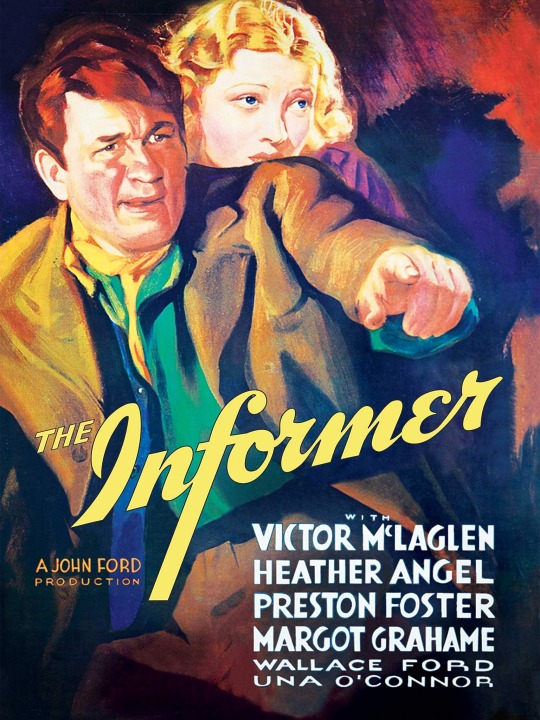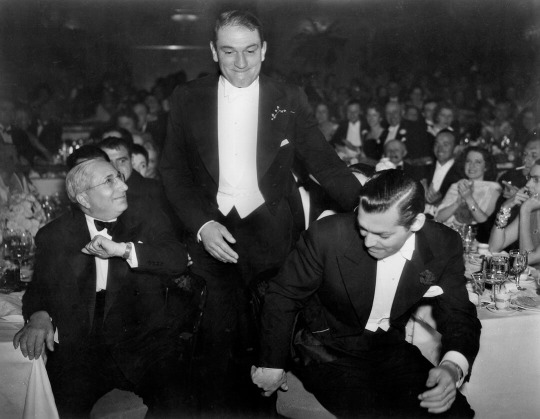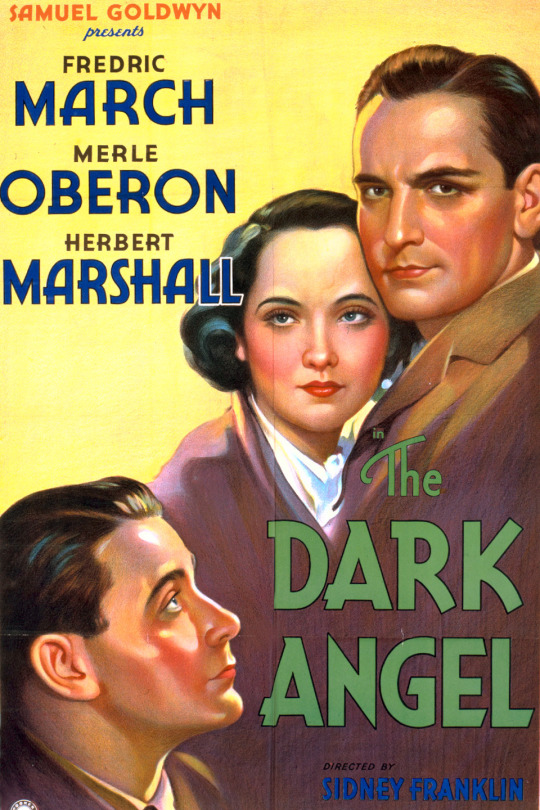#Nat W. Finston
Photo

New Orleans (1947)
The city of New Orleans is synonymous with a rich cultural tapestry shaped over centuries. Located on the banks of the Mississippi River, its economic and political influence waned with the spread of railroads and highways. Today, its influences are indigenous American, African, French, Spanish, Creole, Honduran, Vietnamese, and much more. But the city remains an inimitable cultural force. One of the city’s most significant contributions to the world is jazz – a musical genre that, even in the mid-twentieth century, attracted racially-coded disdain.
I must admit that I am instantly suspicious of any film that takes a city’s name as its title. Being not in a sniping mood as I write this sentence, I will not single any certain film out – for now. But to reduce a film title to a city’s name is to heighten expectations that the filmmaker will capture the so-called “soul” of a city (a nearly impossible task). Or perhaps they shall depict a man-made or natural disaster that takes place in that city (how often does a city’s name become shorthand for a mass shooting?). Enter Arthur Lubin’s New Orleans: a quasi-musical that does not have the courage to let the musical numbers guide it. The film stars Louis Armstrong (essentially playing himself) and Billie Holiday (not playing herself in her only credited role in a feature film), in addition to other jazz stalwarts at the time: Woody Herman, drummer Zutty Singleton, clarinetist Barney Bigard, trombonist Kid Ory, guitarist Bud Scott. New Orleans makes the mistake of not having Armstrong and Holiday be the main stars. Instead, the film has a half-baked, predictable romance. For a film title with such enormous implications, New Orleans’ concentration makes no sweeping statements about the eponymous city. Instead, it turns its gaze to jazz’s reputation among high-society white Americans.
It is 1917. The Storyville district of New Orleans is a den of prostitution, drinking, gambling, and – worst of all – jazz. Storyville’s residents are mostly black, but some of its welcome patrons are white. Nick Duquesne (Mexican actor Arturo de Córdova) runs a gambling joint frequented by Mrs. Rutledge Smith (Irene Rich) and classical music conductor/pianist Henry Ferber (Richard Hagerman). Irene avoids the jazz there (one of the regulars is Louis Armstrong and the aforementioned players), but her daughter, Miralee (Dorothy Patrick) – an operatic soprano who has arrived in New Orleans to make her professional classical music debut – is entranced by this radical music. Miralee is also entranced with Nick, against her mother’s wishes. Miralee is staying with her relative when she meets their maid, Endie (Billie Holiday), who surreptitiously plays the piano and sings jazz music when she gets the chance. As you might imagine, Endie’s employers disapprove. The film comes to a head as the U.S. military forcibly shuts down Storyville (evicting hundreds of black residents overnight), Nick leaves New Orleans, and Miralee must contend with her emotions just before she makes her classical music professional debut.
Billie Holiday’s fans might be troubled by the fact she is a maid here, given that she intentionally avoided physically demanding occupations in real life. Her reaction to this casting is unclear, as different reputable sources offer contradictory claims: that she abhorred being cast as a maid (Meg Greene’s Billie Holiday: A Biography), or that she relished the opportunity to be in a motion picture regardless of the role (an interview with music journalist Leonard Feather). So as tough as it may be to see her in a subservient role, Holiday appears to be enjoying herself – especially during the musical numbers she is a part of. She is clearly, other than Louis Armstrong, the most musically accomplished member of the cast. But when her character disappears from the film in the final third, New Orleans heaves due to the hackneyed romance between Nick and Miralee. To toss the one actor making this film worth watching for no sensible reason is a disastrous choice by screenwriters Elliot Paul (1941’s A Woman’s Face, 1945’s Rhapsody in Blue) and Dick Irving Hyland (1947’s Kilroy Was Here).
Even in a film independently released through United Artists (the one major Hollywood studio of Old Hollywood with the least executive interference), she and Armstrong cannot be the central stars. Considering Holiday’s musical talents, one wonders why she never starred in another film. Despite some digging, I could not find the answer. But if any black woman musician could have films centered around her, it would be Holiday. Her contemporaries, Lena Horne and Ethel Waters, could never overcome the terrible beliefs that audiences would not pay to see a film with a black actress in the lead role. But did Holiday – noting how Louis Armstrong also appeared in films – want to make more films? That may be an answer for someone else to uncover.
More than any film of its time that I can recall, New Orleans is overflowing with a disobedient musical energy. When considering musical genres innovated by African-Americans, there is an underground aspect to their initial spread that, at first, appears exclusive. Jazz, R&B, and hip hop have all gone through these motions: a tumultuous, secretive birth; a rebellious adolescence where critics decry the moral fabric of such music; and finally mainstreaming. Jazz in New Orleans lies somewhere within that adolescence. Its troubled reputation is the result of a mixture of musical and racial tensions. New Orleans’ affluent white community, on its surface, disdains jazz and prefers the import that is Western classical music – opinions they express vocally (as an amateur classically-trained musician who learned more about jazz later in life, I can’t stand the gatekeeping behavior exemplified in this film). So any time that jazz music is played in an unorthodox setting – the parlor of the Smith household, an orchestra hall – it feels defiant, dangerous.* These musical-racial dynamics persist in America to this day. To even see a film acknowledge that conflict, however ineloquently, is credit to the screenwriters and director Arthur Lubin understanding aspects about musical popular culture of this time.
But what is New Orleans and New Orleans without music? First sung by Holliday and reprised (one might even say appropriated in the negative sense) multiple times is, “(Do You Know What It Means to Miss) New Orleans”, with music by Louis Alter and lyrics by Edgar De Lange. Louis Armstrong is on his signature trumpet, a phalanx of great jazz instrumentalists play on the flanks, and Billie Holiday’s voice captures the timbre necessary in any song about longing.
Do you know what it means to miss New Orleans
And miss it each night and day?
I know I’m not wrong, the feeling’s getting stronger
The longer I stay away.
youtube
It is a song representative of this film’s failed ambitions as an embodiment of New Orleans’ spirit. But it is also a brilliant showcase for some of the great jazz figures working at this time – including instrumental performances by Woody Herman and his orchestra and a virtuosic performance of “Honky Tonk Train Blues” by pianist Meade “Lux” Lewis. Nevertheless, New Orleans’ most soulful performances always revolve around Armstrong and Holiday singing Alter and De Lange’s original compositions. Other soundtrack highlights include “The Blues are Brewin’” and “Farewell to Storyville”. The former exemplifies Holiday’s timeless appeal, her singing voice’s unornamented pathos that elevates the simplest of lyrics. The latter is the most context-dependent song in the soundtrack and occurs as the U.S. military orders the closure of the speakeasies and gambling joints of Storyville – a swinging elegy without defeatism. New Orleans is at its most enjoyable during these musical numbers, and the film just feels lost whenever Armstrong and Holiday are not present or when any of the supposed leads open their mouths to speak.
That Lubin and the film’s producers do not trust the soundtrack to carry New Orleans indicates an ironic misgiving towards jazz music itself. United Artists’ refusal to reward Armstrong and Holiday star billing over de Córdova and Patrick is probably rooted to then-contemporary reality that movie theaters in the American South refused to show films with black leads. In addition, jazz music – like in this film – was not yet completely in the mainstream. If it appeared in a Hollywood film (and elements of jazz often appeared in mid-century American musicals), it almost always would be presented and popularized by a white performer. This development is not exclusive to jazz, let alone artistic medium. The filmmakers, in New Orleans’ final third, muddle their message through such appropriation. “Cultural appropriation” at its most basic definition is a neutral concept, but the developments in the film’s closing scenes – intentional or otherwise – extend this appropriation by presenting a white person’s presentation of jazz as more acceptable to a general audience than a black person’s.
For New Orleans, it remains obscure in terms of Hollywood musicals, African-American cinema, and within the esteemed United Artists filmography. In the present day, it serves best as an exhibition for some of the most acclaimed jazz musicians and performers working in the 1940s. To those fans of the numerous black jazz performers appearing in the film, New Orleans is a bittersweet reminder of what may have been.
My rating: 6.5/10
^ Based on my personal imdb rating. Half-points are always rounded down. My interpretation of that ratings system can be found in the “Ratings system” page on my blog (as of July 1, 2020, tumblr is not permitting certain posts with links to appear on tag pages, so I cannot provide the URL).
For more of my reviews tagged “My Movie Odyssey”, check out the tag of the same name on my blog.
* In one scene in an orchestral concert hall, jazz is played as an encore to a classical music concert. It says volumes that the audience is beside themselves and that all of the members of the orchestra (and Richard Hagerman, playing their conductor) are transfixed.
#New Orleans#Arthur Lubin#Arturo de Córdova#Dorothy Patrick#Louis Armstrong#Billie Holiday#Marjorie Lord#Irene Rich#John Alexander#Richard Hageman#Elliot Paul#Dick Irving Hyland#Herbert J. Biberman#Nat W. Finston#Woody Herman#Eddie DeLange#Louis Alter#TCM#My Movie Odyssey
5 notes
·
View notes
Audio

"Hot Voodoo" / "You Little So-and-So" (1932)
Marlene Dietrich
with Nat W. Finston & His Paramount Orchestra
(from the soundtrack of "Blonde Venus")
"Blonde Venus" is a 1932 American pre-Code film produced for Paramount starring Marlene Dietrich, Herbert Marshall, & Cary Grant.
Dietrich performs the musical numbers, including the now-obscure "You Little So-and-So" (music and lyrics by Sam Coslow & Leo Robin) & the film’s infamous "Hot Voodoo" (music by Ralph Rainger, lyrics by Sam Coslow), which is nearly 8 minutes in length and mostly instrumental, featuring jazz trumpet & drums.
Dietrich sings the lyrics toward the end of this sequence, which takes place in a nightclub.
This is such a campy song; it's no wonder I love it! It would later be performed in 1975's "The Day of The Locust" by a drag-queen! Vamp it up, kids....
#marlene dietrich#nat w. finston#paramount orchestra#hot voodoo#my edit#blonde venus#blue angel#1932 film#old hollywood#camp#caberet#1930s movies#1930s#nightclub#art deco era#great depression#soundtrack#sam coslow#leo robin#ralph rainger#paramount pictures
24 notes
·
View notes
Text
OUTSTANDING PRODUCTION
youtube
WINNER
MUTINY ON THE BOUNTY
Metro-Goldwyn-Mayer
NOMINEES
ALICE ADAMS
RKO Radio
BROADWAY MELODY OF 1936
Metro-Goldwyn-Mayer
CAPTAIN BLOOD
Cosmopolitan
DAVID COPPERFIELD
Metro-Goldwyn-Mayer
THE INFORMER
RKO Radio
LES MISERABLES
20th Century
THE LIVES OF A BENGAL LANCER
Paramount
A MIDSUMMER NIGHT'S DREAM
Warner Bros.
NAUGHTY MARIETTA
Metro-Goldwyn-Mayer
RUGGLES OF RED GAP
Paramount
TOP HAT
RKO Radio
SHORT SUBJECT (CARTOON)
youtube
WINNER
THREE ORPHAN KITTENS
Walt Disney, Producer
NOMINEES
THE CALICO DRAGON
Harman-Ising
WHO KILLED COCK ROBIN?
Walt Disney, Producer
SHORT SUBJECT (COMEDY)

WINNER
HOW TO SLEEP
Jack Chertok, Producer
NOMINEES
OH, MY NERVES
Jules White, Producer
TIT FOR TAT
Hal Roach, Producer
DIRECTING

WINNER
THE INFORMER
John Ford
NOMINEES
CAPTAIN BLOOD
Michael Curtiz
THE LIVES OF A BENGAL LANCER
Henry Hathaway
MUTINY ON THE BOUNTY
Frank Lloyd
ASSISTANT DIRECTOR

WINNER
THE LIVES OF A BENGAL LANCER
Clem Beauchamp, Paul Wing
NOMINEES
DAVID COPPERFIELD
Joseph Newman
LES MISERABLES
Eric Stacey
A MIDSUMMER NIGHT'S DREAM
Sherry Shourds
CINEMATOGRAPHY
youtube
WINNER
A MIDSUMMER NIGHT'S DREAM
Hal Mohr
NOMINEES
BARBARY COAST
Ray June
THE CRUSADES
Victor Milner
LES MISERABLES
Gregg Toland
ACTOR

WINNER
VICTOR MCLAGLEN
The Informer
NOMINEES
CLARK GABLE
Mutiny on the Bounty
CHARLES LAUGHTON
Mutiny on the Bounty
PAUL MUNI
Black Fury
FRANCHOT TONE
Mutiny on the Bounty
ACTRESS

WINNER
BETTE DAVIS
Dangerous
NOMINEES
ELISABETH BERGNER
Escape Me Never
CLAUDETTE COLBERT
Private Worlds
KATHARINE HEPBURN
Alice Adams
MIRIAM HOPKINS
Becky Sharp
MERLE OBERON
The Dark Angel
ART DIRECTION

WINNER
THE DARK ANGEL
Richard Day
NOMINEES
THE LIVES OF A BENGAL LANCER
Hans Dreier, Roland Anderson
TOP HAT
Van Nest Polglase, Carroll Clark
DANCE DIRECTION
youtube
WINNER
BROADWAY MELODY OF 1936
"I've Got a Feeling You're Fooling" from "Broadway Melody of 1936"
FOLIES BERGERE
"Straw Hat" from "Folies Bergere"
NOMINEES
GOLD DIGGERS OF 1935
"Lullaby of Broadway" from "Gold Diggers of 1935"
GOLD DIGGERS OF 1935
"The Words Are In My Heart" from "Gold Diggers of 1935"
GO INTO YOUR DANCE
"Latin from Manhattan" from "Go into Your Dance"
BROADWAY HOSTESS
"Playboy from Paree" from "Broadway Hostess"
KING OF BURLESQUE
"Lovely Lady" from "King of Burlesque"
KING OF BURLESQUE
"Too Good To Be True" from "King of Burlesque"
TOP HAT
"Piccolino" from "Top Hat"
TOP HAT
"Top Hat, White Tie, and Tails" from "Top Hat"
BIG BROADCAST OF 1936
"It's the Animal in Me" from "Big Broadcast of 1936"
ALL THE KING'S HORSES
"Viennese Waltz" from "All the King's Horses"
SHE
"Hall of Kings" from "She"
WRITING (ORIGINAL STORY)

WINNER
THE SCOUNDREL
Ben Hecht, Charles MacArthur
NOMINEES
BROADWAY MELODY OF 1936
Moss Hart
G-MEN
Gregory Rogers
THE GAY DECEPTION
Don Hartman, Stephen Avery
WRITING (SCREENPLAY)
youtube
WINNER
THE INFORMER
Dudley Nichols
NOMINEES
CAPTAIN BLOOD
Casey Robinson
THE LIVES OF A BENGAL LANCER
Screenplay by Waldemar Young, John L. Balderston, Achmed Abdullah; Adaptation by Grover Jones, William Slavens McNutt
MUTINY ON THE BOUNTY
Talbot Jennings, Jules Furthman, Carey Wilson
MUSIC (SCORING)

WINNER
THE INFORMER
RKO Radio Studio Music Department, Max Steiner, head of department (Score by Max Steiner)
NOMINEES
CAPTAIN BLOOD
Warner Bros.-First National Studio Music Department, Leo Forbstein, head of department (Score by Erich Wolfgang Korngold)
MUTINY ON THE BOUNTY
Metro-Goldwyn-Mayer Studio Music Department, Nat W. Finston, head of department (Score by Herbert Stothart)
PETER IBBETSON
Paramount Studio Music Department, Irvin Talbot, head of department (Score by Ernst Toch)
MUSIC (SONG)
youtube
WINNER
GOLD DIGGERS OF 1935
Lullaby Of Broadway in "Gold Diggers of 1935" Music by Harry Warren; Lyrics by Al Dubin
NOMINEES
TOP HAT
Cheek To Cheek in "Top Hat" Music and Lyrics by Irving Berlin
ROBERTA
Lovely To Look At in "Roberta" Music by Jerome Kern; Lyrics by Dorothy Fields and Jimmy McHugh
3 notes
·
View notes